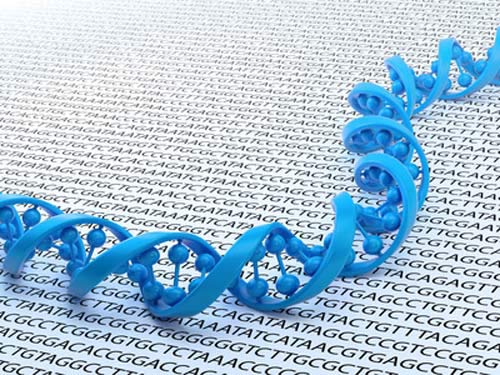The power of next-generation sequencing (NGS) combined with cutting-edge bioinformatics tools can reveal the presence of viruses, even in very small quantities, in a complex sample.

A sophisticated process for revealing the presence of certain viral DNA sequences in a complex sample
Next-generation sequencing (NGS) has revolutionized scientists’ ability to unravel the genetic intricacies of viruses. In this field, it is essential to follow a precise, methodical and rigorous process, from sample preparation to bioinformatics analysis, in order to highlight the presence or absence of certain viral DNA sequences in a complex sample.
Sample preparation: the basis of accurate sequencing
The process begins with meticulous sample preparation, a crucial step to ensure the integrity and purity of genetic material. In viral DNA sequencing, the starting point can range from clinical samples to environmental specimens. Specific protocols are therefore employed to extract viral RNA or DNA, ensuring that the subsequent sequencing steps faithfully reflect the genetic composition of the sample, and therefore of the virus being researched or studied.
Library Preparation: precision in the steps to follow is essential
The isolated genetic material is then converted into a sequencing-ready library. This involves fragmenting the DNA or RNA, attaching specific adaptors, and amplifying the resulting sequences. Precision in library preparation is paramount, as it influences the accuracy and depth of subsequent sequencing.
Sequencing: key step in establishing the nucleic sequences of the viral genome
High-throughput sequencing (or NGS) technologies enable the parallel sequencing of millions of DNA fragments, offering unrivalled exhaustive coverage. This high-throughput approach allows us to capture a comprehensive snapshot of the viral genome, identifying variations, single base mutations, insertions, and deletions with exceptional precision.
Bioinformatic analysis: decoding the obtained nucleic acid sequences
The raw sequencing data undergoes sophisticated bioinformatic analysis. This step involves aligning the sequences to a reference genome, identifying variants, and generating a detailed genome profile of the virus being studied or researched. The algorithms used for this type of analysis aim not only to identify genetic variants of known viruses, but also to detect unknown viruses or combinations of viruses, with exceptional sensitivity.
Applications of viral DNA sequencing to uncover a myriad of information
Viral DNA sequencing not only detects the presence of viruses, but also provides a wealth of additional information, such as:
- Identify Genetic Variations within a viral population, to shed light on the virus’s evolution and adaptation;
- Identify base mutations, insertions and deletions, or pinpoint structural alterations, providing crucial information on virus virulence and pathogen-host interactions;
- Profile Viral Communities, i.e. explore the complexity of viral communities in diverse environments, from clinical samples to ecological niches.
- Identify different viral strains with accuracy to understand epidemiological patterns and design targeted or tailored interventions;
- Monitor the genetic composition of the pathogen and rapidly respond to potential associated epidemics;
- Advance research on Adeno-Associated Virus (AAV) by elucidating its genomic structure and variations, essential for gene therapy and vector development.
- Secure the development of biotechnology products by verifying the absence of contaminating viruses, and complying with the highest regulatory standards.
Thanks to its expertise, DIAG4ZOO is not only capable of sequencing DNA or RNA virus genomes, but also of in-depth analyzing the nucleic sequences obtained, as mentioned above.
On behalf of one of its customers, the company carried out a high-throughput genomic sequencing analysis of a complex sample, with the aim of revealing the presence of an RNA virus present in very small quantities in the samples studied. The rigorous, methodical process followed by the DIAG4ZOO team revealed the presence of specific sequences of the virus in the complex samples analyzed.
